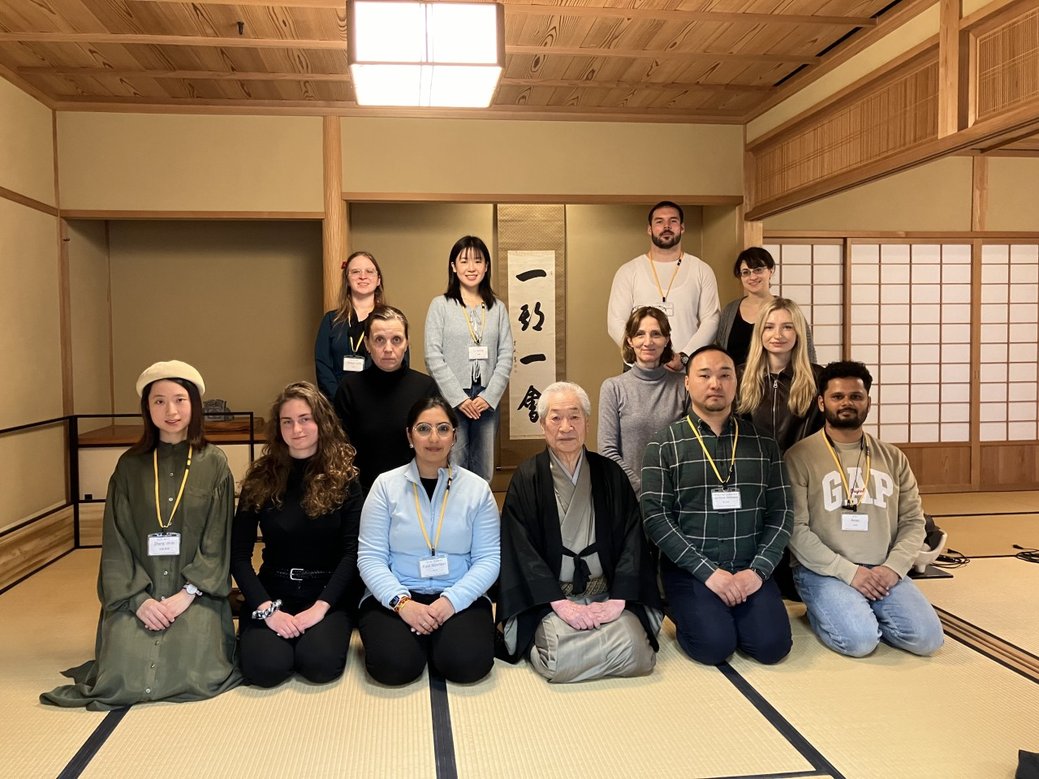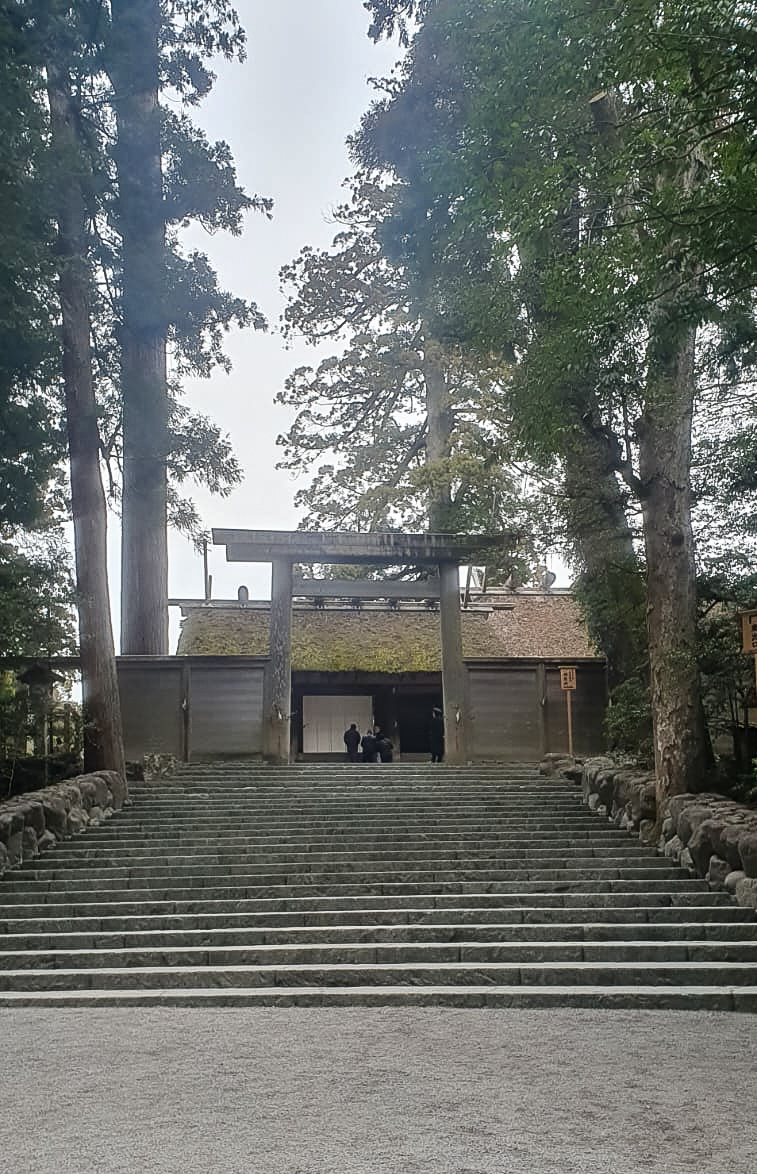
When a student explores religious atmospheres in Japan
Lara Seeger’s firsthand report:
I worked as a research assistant for the RelSAT project at the Faculty of Religious Studies, CERES, and am a student of the Faculty of East Asian Studies at Ruhr University Bochum. In my studies, I focus on Japan. Since there is a lot of intersectional topics in these two fields, I decided to apply for the Ise and the World Study Program at Kogakkan University in 2025 to further my studies.
Going to Kogakkan University gave me not only the opportunity to connect with researchers from other countries who research similar topics, but I also formed a connection to the university. This allowed me to discover places I would otherwise not have had the chance to visit in person. Not only did we get to do fieldwork at shrines and locations that are not reachable by public transport, but we also got the opportunity to talk to staff at shrines, made possible through the connection to the university.
To pray at the Ise Jingu Naiku (伊勢神宮内宮), the most important building of the shrine complex housing the famous kami Amaterasu, presented an especially rare opportunity to observe an important religious ritual. Regular visitors cannot enter the area, but we went there for a prayer. This is an extraordinary opportunity even for Japanese people. Mr. Otawa, our shrine guide, was very knowledgeable and answered our questions very patiently. We were given many opportunities to discuss our research topics with each other, to discover new areas of future research and make the necessary connections to get research material in the future.
It was impressive to see how the shrine took special care of not only preserving but also creating the atmosphere in its space and around it. To preserve the austere and close-to-nature feeling of the Ise shrine, the entire forest in the surrounding mountains is being maintained as well, and there are rarely any modern materials in sight. Even the fire extinguishers were hidden in wooden boxes, and the heated floor we were invited to sit on before the prayer was hidden by traditional tatami, straw mats. This atmosphere directly transferd to anyone who enters the shrine grounds, influencing how the visitors act and behave once they enter the premises. It was amazing to see even children walk slowly or restrain their voices during their stay. People immediately stopped rushing and took care to create an air of dignity and respect – even though the shrine seems like a normal shrine, but its history and the way it is framed politically, mythologically, and religiously frames it as significant and sacred space.

Participating in the three weeks program from February 16 to March 23 was a very valuable experience. The program included finances for the flight and stay, as well as food on some days. In exchange, all participants were updating the public about the program on Instagram daily and signed an agreement to post on social media daily as well as leave the posts up for a certain amount of time. The program itself was structurally divided in four parts, mornings were filled with lectures in Japanese, which were followed by field trips to important religious and cultural places on most days. While the program was quite fast paced, with day trips and assignments, it was very worth the effort, giving us many rare opportunities.
The other participants made this program a very enriching experience, since I could learn a lot from people from other countries. The mix of classes in the morning and field trips in the afternoon gave us a much deeper understanding of the studies than if we had learned about it in class only. Since there are many things, you can only learn here, it also gave me a good opportunity to further my own research.
Additionally, since the current focus of my studies is the atmosphere in shrines, this program helped me in my studies a lot because it allowed me to visit shrines and gain insights from the people working there during and outside of rituals. Personally, I also really enjoyed the longer trips we took to the three most important sites of the Kumano Pilgrimage Route, a path through Western Japan that is frequented by many who seek spiritual experiences.
I was able to conduct research not only at the main national shrine, Ise Jingu, but also important shrines in the Kumano Kodo Pilgrimage area, Kumano Hayatama Taisha, Nachi Taisha and Hongu Taisha. It was exhausting, but very interesting to see these religious, historical sites far removed from the bigger cities.
Image: Ise Jingu, the imperial shrine in Mie Prefecture, Japan (©Lara Seeger)
-
Religious Space, Atmospheres and the Transcendent (RelSAT) is a DFG-funded collaborative project that deals with religious spaces in Japan and their atmosphere. Further information on RelSAT can be found here: https://ceres.rub.de/en/research/projects/RelSAT/
-
Link to Kogakkan University's “Ise and the World” study program: 皇学館大学「伊勢」と日本スタディプログラム
-
Kogakkan University website: https://www.kogakkan-u.ac.jp/

